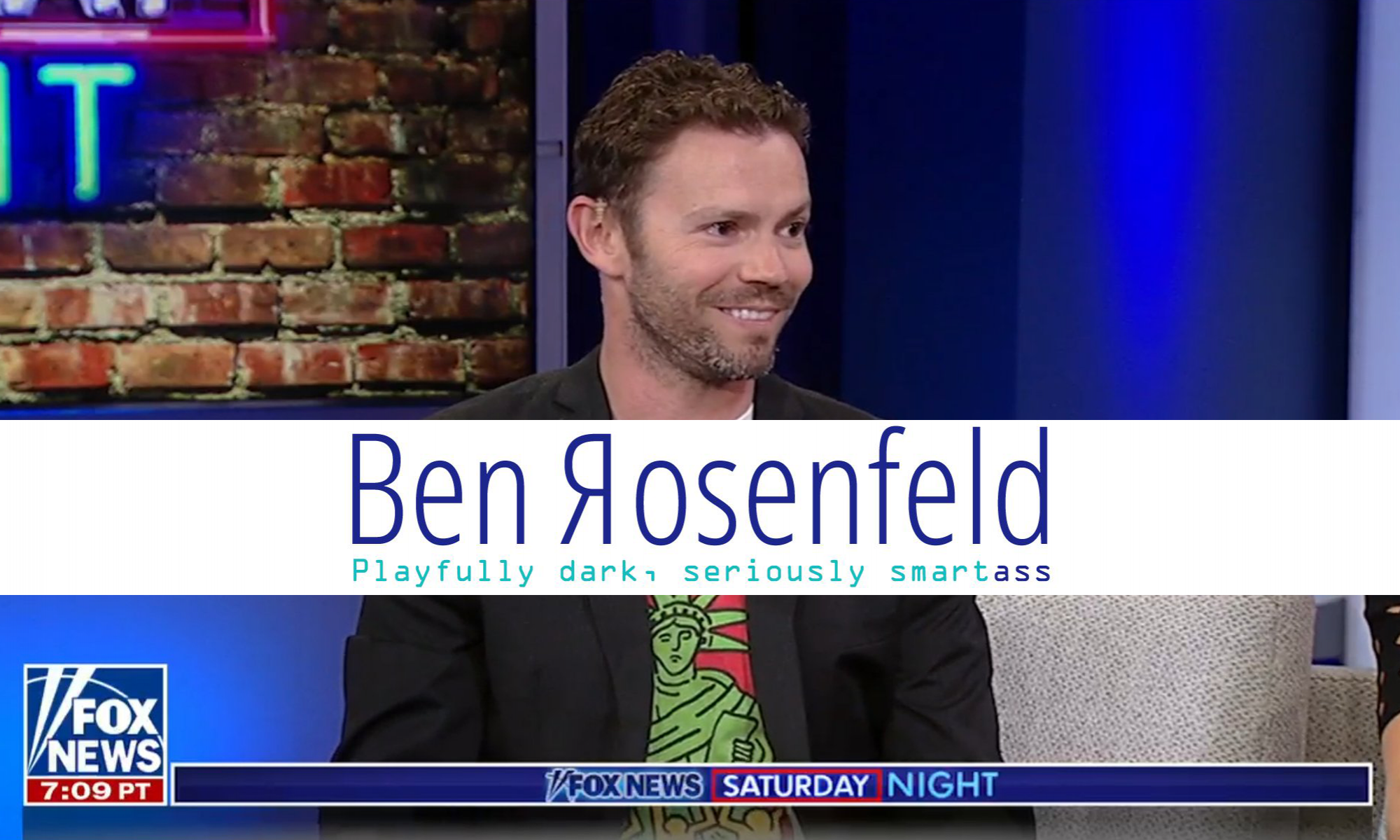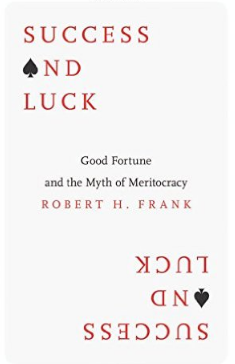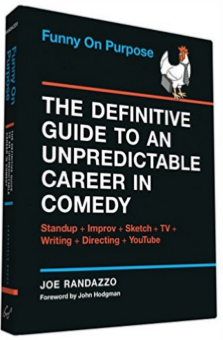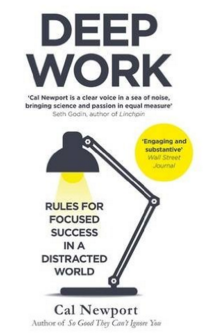 I recently read “The Charisma Myth: How Anyone Can Master the Art and Science of Personal Magnetism” by Olivia Fox Cabane. Below are the quotes I found most interesting. If you like the quotes, click here to buy the book.
I recently read “The Charisma Myth: How Anyone Can Master the Art and Science of Personal Magnetism” by Olivia Fox Cabane. Below are the quotes I found most interesting. If you like the quotes, click here to buy the book.
“Imagine what your life would be like if you knew that the moment you entered a room, people would immediately take notice, want to hear what you have to say, and be eager to earn your approval. For charismatic people, this is a way of life. Everyone is impacted by their presence. People are magnetically drawn to them and feel strangely compelled to help them in any way they can.” (2)
“Charisma gets people to like you, trust you, and want to be led by you. It can determine whether you’re seen as a follower or a leader, whether your ideas get adopted, and how effectively your projects are implemented.” (2)
“As extensive research in recent years has shown, charisma is the result of specific nonverbal behaviors, not an inherent or magical personal quality.” (4)
“As extensive research in recent years has shown, charisma is the result of specific nonverbal behaviors, not an inherent or magical personal quality.” (4)
“We assume that charismatic people are magnetic every instant of every day. They aren’t.” (4)
“When you meet a charismatic person, you get the impression that they have a lot of power and they like you a lot.” (5)
“The equation that produces charisma is actually fairly simple. ALl you have to do is give the impression that you possess both high power and high warmth, since charismatic behaviors project a combination of these two qualities.” (5)
“A final dimension underlies both of these qualities: presence.” (5)
“Three quick tips to gain an instant charisma boost in conversation:
Lower the intonation of your voice at the end of your sentences.
Reduce how quickly and how often you nod.
Pause for two full seconds before you speak.” (11)
“When we’re not fully present in an interaction, people will see it. Our body language sends a clear message that other people read and react to, at least on a subconscious level.” (14)
“Someone who is powerful but not warm can be impressive, but isn’t necessarily perceived as charismatic and can come across as arrogant, cold, or standoffish. Someone who possesses warmth without power can be likeable, but isn’t necessarily perceived as charismatic and can come across as overeager, subservient, or desperate to please.” (20)
“Because what’s in your mind shows up in your body and because people will catch even the briefest microexpression, to be effective, charismatic behaviors must originate in your mind.” (22)
“Lao Tzu reportedly said: “To know others is knowledge. To know oneself is wisdom.” (24)
“Any physical discomfort doesn’t that affects your visible, external state – your body language – even slightly may affect how charismatic you are perceived to be.” (29)
“Signs of fatigue can easily show up in people’s body language as lack of enthusiasm.” (30)
“Responsibility Transfer
Whenever you feel your brain rehashing possible outcomes to a situation, try a transfer of responsibility to alleviate the anxiety.
Sit comfortably or lie down, relax, and close your eyes.
Take two or three deep breaths. As you inhale, imagine drawing clean air toward the top of your head. As you exhale, let that air whoosh through you, washing away all your worries and concerns.
Pick an entity – God, Fat, the Universe, whatever may best suit your beliefs – that you could imagine as benevolent.
Imagine lifting the weight of everything you’re concerned about – this meeting, this interaction, this day – off your shoulders and placing it on the shoulders of whichever entity you’ve chosen.
Visually lift everything off your shoulders and feel the difference as your are now no longer responsible for the outcome of any of these things. Everything is taken care of. You can sit back, relax, and enjoy whatever good you can find along the way.” (34-35)
“The very act of comparing and evaluating hinders our ability to be fully present.” (37)
“When your brain spins negative scenarios, remind yourself that you may not be getting an accurate perception of reality. Your brain might be following its negativity bias, playing up some elements more than others, or omitting some positives entirely.” (49)
“The researchers concluded that deciding to change beliefs was a far more effective and healthier solution than attempting to repress or ignore emotions.” (53)
“In most situations, we don’t know for certain what motivates a person’s actions, so we might as well choose the explanation that is most helpful to us and create a version of events that gets us into the specific mental state we need for charisma.” (53)
“One charismatic entrepreneur told me: “I decide to interpret everything favorably toward myself. It’s not just that I’m optimistic, I’m actually conveniently deluded.” (54)
“Resentment is like drinking poison and waiting for the other person to die.” (57)
“Look for little miracles unfolding right now.
Love the confusion.
What if you could trust the Universe, even with this?” (70)
“After fifteen years of speaking professionally, I find that doing even thirty seconds of visualization makes a substantial difference to my performance. It greatly affects how charismatic I am on stage. In fact, every time I don’t run through a visualization just before stepping on stage, I regret it. Even when I know the speech so well I could say it backward, it’s worth using visualization to ensure that I get into the right charismatic mental state.” (72)
“Before key meetings, she’ll imagine “the smiles on their faces because they liked me and they are confident about the value I’m bringing them. I’ll imagine as much detail as I can, even seeing the wrinkles around their eyes as they’re smiling.” She visualizes the whole interaction, all the way through to the firm handshakes that close the meeting, sealing the deal.” (73)
“To boost your charisma, choose figures who represent complete self -confidence, or warmth and caring, or calm and serenity. Or you might even find some figures who embody all the elements at once. Visualize yourself going to these figures for a “pep talk” anytime you feel you need one. Thanks to the brain’s wonderful placebo response, this will produce effects even if it doesn’t feel real.” (74)
“Gratitude has a special advantage for those of us who sometimes find it uncomfortable to connect with others. It can give us charismatic warmth without having to connect with anyone.” (75)
“When our only aim is to broadcast goodwill, it takes the pressure off. We’re no longer striving, struggling, pushing for things to go in a certain direction. And since we’re less concerned about how the interaction goes, we can both feel and project more charismatic confidence. Goodwill is the simple state of wishing others well.” (80)
“One simple but effective way to start is to try to find three things you like about the person you want to feel goodwill toward. No matter whom it is you’re talking to, find three things to appreciate or approve of – even if these are as small as “their shoes are shined” or “they were on time.” When you start searching for positive elements, your mental state changes accordingly and then sweeps through your body language.” (80)
“In any interaction, imagine the person you’re speaking to, and all those around you, as having invisible angel wings.” (81)
“Imagine that you’re all a team of angels working together, all doing your wholehearted best.” (81)
“While looking at someone, think, I like you. And I like you just for you.” (81)
“Compassion is empathy plus goodwill: you understand how they feel, and you wish them well.” (82)
“Your willingness to focus on others’ well-being is all you need to positively change your body language. This will be enough to give people the feeling that you really care about them, and is one of the core components of charisma.” (82)
“Kristin Neff defines self-compassion as a three-step process: First, realizing that we’re experiencing difficulties. Second, responding with kindness and understanding toward ourselves when we are suffering or feel inadequate, rather than being harshly self-critical. Third, realizing that whatever we’re going through is commonly experienced by all human beings, and remembering that everyone goes through difficult times.” (86)
“For confidence, assertiveness, and to be able to emanate gravitas, imagine playing the role of a military general – take a wide stance, puff up your chest, broaden your shoulders, stand straight, and confidently put your arms behind your back. Feel the effect of this posture internally.” (92)
“For a boost in both energy and warmth, stand up, stretch your hands as high up as possible, inhale as much as you can – imagine your ribcage expanding, doubling in size – make the biggest smile you can and look upward, hold for a second, then relax everything.” (92)
“- Creating an optimal mental state is crucial to unleashing our full charisma potential.
– Visualization can help you create the right mental state and thus the right charismatic body language. To make visualizations most effective, vividly engage all five senses in your imagination.
– You can increase both warmth and confidence by practicing gratitude, goodwill, and compassion for others as well as for yourself.
– Just as professional athletes and performers do, plan a gradual warm-up to reach your peak charismatic performance. Before important events, avoid experiences that would impair your mental state and plan warmth- and confidence-boosting activities instead.
– Your body affects your mind. Flip the visualization technique on its head and practice adopting the right posture and facial expressions to access more of almost any desired internal state.” (97)
“In another experiment, a researcher conducted fake surveys in shopping malls wearing either a designer-logo sweater or a no-logo sweater. When faced with the designer label, 52 percent of people agreed to take the survey, compared with only 13 percent who saw no logo. Expensive logos also affected people’s charitable impulses. Research assistants brought in nearly twice as many donations when their shirts bore a visible designer label than they did when they wore (otherwise identical) no-label shirts.” (105)
“As always, body language trumps all other signs of charisma. Even if all the other signals are present, a body language of insecurity will undermine any possibility of authority charisma. Conversely, you can gain a certain measure of authority charisma through body language alone if it’s strong enough.” (105)
“If, for instance, you can get yourself into a mental state of goodwill, this would show in your facial expressions and body language and register with people on a deep emotional level. People perceiving this would want to like you, want to see your behaviors and actions in the most positive way. Think of goodwill as your charisma safety net: as long as you can get into a state of goodwill, you will have the absolute best chances of getting your charisma right.” (111)
“According to economist John Kenneth Galbraith, when “faced with the choice between changing one’s mind and proving there is no need to do so, almost everyone gets busy on the proof.” (115)
“When people are similar in terms of attire, appearance, demeanor and speech, they automatically assume they share similar social backgrounds, education, and even values.” (118)
“Clothing, essentially, is modern-day tribal wear.” (118)
“An easy way to start interactions in a way that both communicates warmth and sends the conversation down the right path is to offer a compliment about something the person is wearing. This would be a great opener when you’re aiming to broadcast either kindness charisma or focus charisma… continue with an open-ended question, such as “What’s the story behind it?”… Another good question to break the ice with is “Where are you from?”… You can follow up with “What was it like growing up there?”… “To keep people talking, simply ask open-ended questions, such as “What brought you here tonight?” or “How are you connected to this event?”” (123)
“Aim to keep your questions focused on positive subjects because people will associate you with whatever feelings your conversation generates.” (123)
“Even when you’re speaking, the one word that should pop up most often in your conversation is not I but you.” (124)
“What impacts people isn’t the words or content used. Rather, they remember how it felt to be speaking with you.” (126)
“Good listeners know never, ever to interrupt – not even if the impulse to do so comes from excitement about something the other person just said… Great listeners know to let others interrupt them… Master listeners know one extra trick, one simple but extraordinarily effective habit that will make people feel truly listened to and understood: they pause before they answer.” (130)
“When someone has spoken, see if you can let your facial expression react first, showing that you’re absorbing what they’ve just said and giving their brilliant statement the consideration it deserves. Only then, after about two seconds, do you answer.” (131)
“Because we’re constantly creating associations in people’s minds, it’s crucial in both business and social situations to be aware of how you’re making people feel. To be charismatic, you need to create strong positive associations and avoid creating negative ones.” (133)
“Imagine that the person you’re speaking with is the main star in a movie you’re watching right now. This will help you find them more interesting, and there’s even a chance that you’ll make them feel like a movie star, too.” (135)
“Image generation has a powerful impact on emotions and physiological states and a high impact on brain function.” (136)
“Whenever you can, choose to speak in pictures. You’ll have a much greater impact, and your message will be far more memorable.” (136)
“Presidents rated as charismatic, such as FDR and Abraham Lincoln, used twice as many visual metaphors in their inaugural addresses as did those rated as noncharismatic.”
“”When you tell someone, “No problem,” “Don’t worry,” or “Don’t hesitate to call,” for example, there’s a chance their brain will remember “problem,” “worry,” or “hesitate” instead of your desire to support them. To counter this negative effect, use phrases like “We’ll take care of it” or “Please feel free to call anytime.” (138)
“The degree to which your voice fluctuates affects your persuasiveness and your charisma. Increasing voice fluctuation means making your voice vary in any of the following ways: pitch (high or low), volume (loud or quiet), tone (resonant or hollow), tempo (fast or slow), or rhythm (fluid or staccato).” (140)
“One classic exercise to hone your projection skills is to imagine that your words are arrows. As you speak, aim them at different groups of listeners.” (141)
“A slow, measured tempo with frequent pauses conveys confidence.” (141)
“Broadcast power through your voice by 1) Speak slowly. 2) Pause. 3) Drop intonation. 4) Check your breathing.” (141)
“In order to project more warmth in your voice: smile.” (141)
“Often, just thinking about smiling is enough to give your voice more warmth.” (142)
“Imagine that you’re a preacher exhorting your congregation.” (142)
“Alan Weiss says, “Logic makes people think. Emotion makes them act.” Which would you rather have? If you speak only to people’s logical mind, you’re missing half the playing field. Charisma, which makes us feel impressed, inspired, or thrillingly special, speaks to our emotional side.” (144)
“Mirroring is also one of the few techniques that can help overcome a bad first impression.” (149)
“When people are sitting across from each other with a table dividing them, they tend to speak in shorter sentences, are more likely to argue, and can recall less of what was said.” (152)
“Keep eye contact for three full seconds at the end of your interaction with someone.” (154)
“Charismatic eye contacts means switching to a softer focus. This immediately relaxes our eyes and face, and quiets down our stress system. Here are three simple steps to help you switch to a soft, open focus: First, close your eyes. Focus on the space around you, the empty space in the room. Now focus on the space filling the entire universe. That’s it – you’ve moved into “soft focus.” (155)
“Few things gain you charisma points more than improving your eye contact. The next time you’re in a conversation, try to regularly check whether your eyes are feeling tense. If you feel the slightest bit of tension around your eyes, aim to relax them. You can use any favorite quick visualization (just one heartwarming image can do the trick) or aim to move into soft focus.” (156)
“Follow these seven steps to convey confident body language:
Make sure you can breathe. Loosen any clothing if need be.
Stand up and shake up your body.
Take a wide stance and plant your feet firmly on the ground. A wide, stable stance helps you both feel and project more confidence.
Stretch your arms to the ceiling, trying to touch it with your fingertips.
Now stretch your arms to the walls on either side of you, trying to touch them.
Bring your arms loosely to your sides, and roll your shoulders up and then back.
INFLATE. Try to take up as much space as possible. Imagine puffing up like a gorilla, doubling in size.” (159)
“High-status, high-confidence body language is characterized by how few movements are made.” (160)
“Nodding once for emphasis or to express agreement is fine and can be an effective communication method, but nodding three or four times in rapid succession is not.” (161)
“Fidgeting decreases presence, thus charisma. Even when you have warmth, confidence, and are mentally present, if you are physically restless, you can’t be charismatic. Your body language is sending distracting signals.” (161)
“Be aware, however, that broadcasting too much power can come across as either arrogant or intimidating for some people. The warmth-enhancing techniques, such as keeping your eyes in soft focus, will counter this. You can also aim to bring your chin down a few degrees – imagine a king bowing his head to a noble emissary. This had a double benefit. It avoids giving the impression that you’re contemptuously looking down your nose at someone and simultaneously makes you appear more thoughtful, attentive, and deliberate as your eyes automatically open wider.” (162)
“Ask them for something they can give without incurring any cost: their opinion. Asking for someone’s opinion is a better strategy than asking for their advice, because giving advice feels like more effort, as they have to tailor a recommendation to your situation, whereas with an opinion, they can just spout whatever is on their mind.” (168)
“The more appreciation you express and the more you show them the impact they’ve had on you, the more they will like you and feel invested in your success. They’ll rationalize in your favor. When you show people how they’ve impacted you, they feel that they’ve in a sense made you. This sense of ownership gives them a vested interest, and they identify with you; you become part of their identity. Therefore, they feel more responsibility for ensuring your success.” (169)
“Hostility is often nothing but the external manifestation of internal turmoil.” (170)
“Write out the e-mail as you normally would, but before you send it, simply cut and paste so that whatever pertains to the other person appears first and most prominently.” (185)
“There are a few tricks to owning the stage… First, when you stand, be sure to have a wide stance, well balanced on both feet… Second, practice without a podium or a lectern… moving comfortably around the stage will make you appear much more confident, powerful, and charismatic… Third, find the right volume to project confidence.” (193)
“As you roam about the stage, give one to two seconds of eye contact per person.” (194)
“It’s really worth paying attention to your tempo because the slower you speak, the more thoughtful and deliberate you will sound, and the more attention people will give to what you say.” (196)
“When you walk on stage, come to the center, face the audience, and stop. Remain completely silent as you count three full seconds while slowly sweeping your eyes across the crowd and making eye contact. This may feel endless, but it will be well worth it.” (196)
“Business moguls and entertainers make mistakes purposefully to make themselves more relatable to the audience.” (198)
“As soon as you start worrying about yourself – wondering how you’re doing, or if this or that sentence was good enough – self-criticism can easily arise. If, instead, you can make it all about your audience – wondering how they’re doing – you take the focus off yourself, lift your self-consciousness, and get into a state of goodwill, which will be read and appreciated by the audience.” (199)
“People who respond to crisis with bold, decisive actions will be perceived as charismatic.” (201)
“Giving people a sense of ownership for your success is a great way to prevent resentment and engender good feelings, such as pride and loyalty, instead.” (208)
“Showing vulnerability and humanity makes you more relatable and helps to avoid the feelings of alienation, which is a real risk when your charisma gives you a touch of the superhuman.” (216)
Liked the quotes? Buy the book here.





